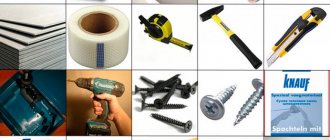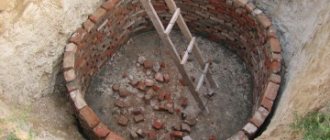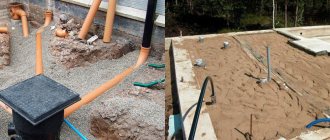When starting to develop their newly acquired plot, many happy owners are faced with the problem of difficult access to it. The reason for this is the sewage or drainage ditches that run along the road or even along the entire perimeter of the village. The most affordable thing that you can easily do with your own hands and that is the first thing that comes to mind for inexperienced summer residents is to drive a bulldozer or arm yourself with shovels, fill the ditch well, level it, compact it and pave it with asphalt.
Construction of the entrance to the site through a ditch
Many people do this. Great, no problems until there is a period of heavy rain or snow melting. The fact is that the sewage ditch is left for a reason, but with the purpose of directing groundwater or wastewater bypassing the site. Otherwise, flooding threatens the buildings, cellar, and basement of the house.
Making a correct entry into a site is more difficult than simply burying a ditch, but it is more reliable.
This work does not pose any great difficulties, the main thing is to take into account some nuances.
Why are drainage ditches needed?
A drainage ditch is needed to drain surface water after heavy rainfall, snow melting and from existing springs. In this case, shallow ditches are made that have a slope towards water drainage. They protect the roadway and adjacent land from destruction due to water flow. And also from the appearance of holes and potholes on the road and ravines in the surrounding area.
The depth and width of the ditch are selected sufficient to ensure the throughput of flowing water. Typically no more than 1 meter deep and 2 meters wide.
To drain wetlands, deeper canals are dug. The slope in them may not be observed. Water accumulates in the channel and evaporates. The deeper the canal, the lower the groundwater level will drop and a larger area will be able to be drained. There may be no slope for water drainage, especially if this area is located in a lowland and there is nowhere to drain the water. Sometimes they make an artificial pond with a canal connected to it. The depth of the channel can reach 2–3 meters, width up to 5.
Drainage channel for draining the area
Briefly about the main thing
Before starting any construction work on a plot of land, you need to think about what kind of transport will transport building materials to it, and whether a crane or other heavy equipment is needed at the construction site.
In any case, it is necessary to inspect the road in advance and assess whether the required transport can pass along it and whether additional work will be needed to prepare the passage routes. If you neglect this, then there is a possibility that these issues will be resolved at the moment when the equipment has already been rented, which can significantly increase the estimate.
Ratings 0
Coordination of ditch crossing arrangement
First of all, it is necessary to agree in writing on the crossing arrangement with the owner of the ditch or with the service organization. The owner may be a dacha or gardening partnership. Maintenance is most often carried out by road services. If there is no information on this matter, then you need to contact the municipal administration. All roads and structures for their maintenance are on the balance sheet of municipalities.
If the municipality declares non-involvement and does not know the owner, let it report this in writing to the request for approval. Then no one will be able to hold them accountable for arbitrariness and damage to hydraulic structures. This is how such objects are listed in the register of owners.
In response to the request, conditions and requirements must be issued; they can be called technical conditions that must be fulfilled and observed during the construction of the crossing.
They must contain conditions on the need to organize the passage of water, or allow the absence of a collector. For example, if there is no drainage when draining the area. The minimum pipe cross-section size and pipe type are indicated. As well as requirements for filling and strengthening the embankment. Specifications may contain other requirements. For example, notify about the completion of work and hand over the object according to the act.
Drive width and pipe cross-section
The technology for constructing a crossing without water passage is not fundamentally different from the option with a pipe. But a collector device is preferable, especially if there is even the slightest drain. In this case, the water will not stagnate and spread an unpleasant odor.
The width of the passage is selected taking into account the distance of the ditch from the road and from the border of the site. And also taking into account the possible use of the driveway as temporary parking for a car. If at a crossing there is no need to make turns when entering and exiting the road, or to park a car, in this case 3 meters is sufficient.
If such a need arises, the width should be increased to 4 meters. This will be enough for a turn-in ride. And when the car is parked, you can freely walk past it even with a baby stroller or a construction wheelbarrow. It is not worth building more than 5 meters; this will greatly complicate cleaning the collector, which will inevitably be needed in a few years.
The cross-section of the pipe must be at least 400 mm. Otherwise, the pipe will quickly silt and require frequent cleaning.
When selecting a section, you should also take into account:
- maximum volume of drainage in spring and during heavy rains;
- the minimum permissible thickness of the embankment above the pipe to protect it from loads, taking into account the pipe material;
- ditch depth;
- the height of the pipe above the bottom of the ditch to reduce siltation.
How to drive onto a site with a slope
If there is a slope in one direction or another between the site and the road, the drive is planned taking into account the angle of the inclined plane. During construction work, all options must be provided to prevent spontaneous movement of the machine downhill and sliding in the event of icing.
With a large inclination, if possible, the trajectory is extended and curved as much as possible. Or they arrange a flat area in front of the gate. It is recommended to provide sloped driveways with canopies to protect them from precipitation. Thus, there is a chance that it will be possible to avoid icing in winter. Such structures are assembled from wood and metal. The covering is chosen to suit every taste: corrugated sheets, slate, soft tiles or polycarbonate.
Modern technologies make it possible to install a heated floor system directly at the entrance. It is additionally treated with waterproofing materials. During the cold season, this method prevents the formation of ice.
If the road is higher than the site, it is necessary to provide additional traction for the wheels of the car to avoid automatic rolling.
Temporary and simplified relocation option
Work begins with preparing the base for the pipe. First, a layer of crushed stone, fraction 40–100 mm, is poured so that the pipe does not settle when exposed to a passing car. The crushed stone is compacted. The height of the crushed stone is from 10 to 20 cm, above the bottom level. This is necessary so that the pipe is above the bottom and does not silt. Sand is poured on top of the crushed stone and compacted with a layer of 10 cm. Sand is needed to ensure full contact of the entire body of the pipe with the base.
The base should have a slope along the entire length of 3 cm per meter towards the drain. This slope will ensure a good flow of water and will wash away most of the suspension. Including when cleaning a pipe using a high-pressure apparatus, for example Karcher.
A pipe or sections of pipes are laid on the prepared base. Next, the pipe is filled with soil and compacted layer by layer using a tamper. The total layer of the embankment above the pipe must be at least 50 cm. If this is not possible, it is necessary to protect the pipe with a ceiling made of concrete or reinforced concrete slabs.
Dornit or geotextile is laid on the ground so that the crushed stone does not mix with the ground. The last layer of 20 cm to the level of the upper mark is again filled with crushed stone, fractions 40–100 mm. On top of the crushed stone there is a small layer of sand to secure the crushed stone. Crushed stone serves to distribute the load of the vehicle and prevents the formation of ruts.
The ends of the embankment should be strengthened from erosion and crumbling. I sprinkle them with soil and seed them with grass. You can use road geogrid, which will further strengthen the slope.
For strengthening, you can also build brickwork or pour a concrete wall. In both cases, it is necessary to begin by preparing the foundation to prevent the retaining walls from sinking into the wet soil.
Construction of approaches
Before starting the installation of approaches to the house, it is necessary to study not only the terrain, but also determine what the roadway will be made of. You need to know how to make it to extend its service life. Studying the standards for the construction of such objects will allow you to design it correctly, conveniently for yourself and without interference for others.
Choice of coverage
The main negative factor to which entry zones are exposed is intense wear and tear. Therefore, increased demands are placed on the material from which they are made.
Its main qualities should be strength, durability, resistance to temperature fluctuations and harsh climatic conditions (frost, exposure to direct sunlight). The top layer should not allow puddles to accumulate and be subject to deterioration during the off-season.
The coating can be simple, consisting of leveled and compacted soil with an embankment of sand, gravel or crushed stone, or increased strength. Among these are :
- Monolithic concrete made by pouring a mixture. If the installation technology is followed, then such an entrance will last a long time, which compensates for the rather high cost of production. One of the disadvantages is also cement dust, which is formed during heavy traffic.
- Application of reinforced concrete slabs. This is a less durable canvas due to the joining seams, which collapse and lead to unevenness on the road.
Iron concrete is a good material for building an entrance to a site, but it is not without its drawbacks - Asphalt pavement will cost much less. However, its high-quality installation without special equipment is difficult. With conscientious work, such a road will last a long time in compliance with the necessary requirements.
- Stone paving stones or tiles, in addition to strength and durability, have an aesthetic appearance. It is possible to create a harmonious combination with the overall design of the house. However, the cost of entering a turnkey site is high, and installation requires more time and special skills.
- Wood flooring rots and does not last long. But strength, availability and low price make such material in demand when constructing trench floors.
The selection of coverage is primarily influenced by the financial condition of the owner. Inexpensive farms are usually reached by sandy paths. Concrete coverings are also popular.
Regulatory Requirements
Convenience and external aesthetics are not the only conditions when arranging entrances to a house. They must comply with SNiP, which ensures the safe use of structures. It is worth paying attention to the following parameters:
- The driveway must be at least 4-4.5 meters wide.
- The junction with the main road should increase to 8-8.5 m to ensure a turning radius of at least 5 m.
- When organizing a ditch, a 30-centimeter pipe with a length of more than 4.5 m should be used.
- The drainage slopes under the road and the trench must match.
- The entrance level of the junction and the roadway must be made the same.
The owner of the territory, when organizing the construction of an approach to the site, determines its structure. At the same time, the capacity of the main road should not decrease. It is prohibited to plan parking there.
The entrance to the site should not reduce the capacity of the adjacent road
If construction is carried out on the territory of a gardening partnership, all rules in force there must be observed.
Carrying out concrete work
This method is the most accessible and reliable of all. Using a similar technology, you can also arrange a parking space in front of the house. Installation should be done in this order:
- Remove the soil to a depth of 30 cm and compact the bottom.
- Pour a sand cushion 25-50 cm and then compact it.
- Lay a reinforcing mesh of metal reinforcement on top. The diameter of the rod should be 8-10 mm, and the cell should be no more than 20-25 cm.
To prepare the solution you will need 1 part of cement grade M300 or higher, 3 parts of sand and 3-4 parts of crushed stone. The thickness of the concrete layer should be at least 12-15 cm, the surface is leveled and checked using a building level.
Concrete work at the entrance to the site should be done strictly according to the instructions in order to obtain the expected result
It is necessary to prevent the appearance of all kinds of depressions on the coating. Water will accumulate in them, which will lead to destruction of the canvas. You also need a small slope from the central axis for water to drain.
Standard moving option
Crushed stone is used for the base, and it is laid and compacted not only at the bottom of the ditch, but also on slopes. Concrete can be prepared on site and poured into prepared formwork. If the wall thickness is less than 400 mm, then a frame made of reinforcement is required. The wall thickness must be at least 25 cm.
Above the pipe, near the masonry or concrete wall, it is worth making a gap of 5–10 cm, which is sealed with soft insulating material. This will prevent the wall from affecting the ends of the pipe if there is slight subsidence, and will protect it from breaking into two parts. Particularly important for concrete collectors.
To prevent the car from sliding off, you should raise the wall above the roadway by 15 cm.
Major travel option
When constructing a major driveway, the technology of backfilling the pipe changes. Before laying the pipe, geotextiles or road mandrel are first laid on the prepared base, overlapping the ditch slopes. Then the pipe is laid and filled with crushed stone of a medium fraction of 20–60 mm. The woven material will not allow crushed stone to penetrate into the soil under load.
A frame of reinforcement is laid on top of the compacted crushed stone, and concrete is poured. Particular attention must be paid to the edges of the concrete surface. To prevent them from breaking off, a recess should be made at the ramps and the thickness of the concrete should be increased to 200 mm. Or lay a flat road curb along the edges of the concrete ramp.
Other design options
The pipe option is the most popular, but it is not always the most optimal. It may well happen that the pipe will have to be transported from afar, and you don’t really want to spend extra money on this. It is not uncommon for there to be other suitable materials nearby.
In this case, you can consider alternative options for moving the crossing:
- option with crossing made of reinforced concrete slabs;
- roll from a wooden carriage 150 mm thick;
- laying concrete blocks;
- use of U-shaped concrete collectors (trays);
- bridge arrangement.
In all these cases, it is necessary to choose the correct distance between the supports so that the slab or deck does not break under a heavy car. At the same time, trucks and construction equipment should not be excluded from entering the site.
A width of 0.5 meters will be sufficient for water flow. In this case, any ceiling structure will withstand even a truck crane.
Supports along the slopes can be poured from concrete, or concrete blocks can be installed on a prepared base. But what if the distance between the slopes of the ditch is much greater.
If the depth of the ditch is less than 70 cm, then it is advisable to use reinforced concrete U-shaped trays. They are available in different sizes and with ready-made grilles that can support the weight of a passenger car. If you plan to bring in heavy vehicles, then instead of a grate you can lay a concrete floor slab.
Such a collector is laid with its flat side on crushed stone or fresh concrete. The sides are covered with crushed stone so that the vertical walls do not deviate from the vertical under load. Such a collector is convenient to clean from sludge deposits.
Alternative
If you have big problems, you can choose alternative solutions. With a large slope angle, you will have to enter along a curved path, which will help to gradually reduce the magnitude of the difference. If the area in front of the site does not allow you to do this, then you will have to make an extended entrance that will run parallel to the site, and there must be a turning area in front of the gate. Too large bumps and ditches will sometimes have to be avoided if you enter the site from the rear side of the site. On the front side, you will need to make a convenient bridge and install a gate for those who have income from housing, but do not get there.
What material to choose a collector from?
Traditionally, thick-walled metal pipes were used. The industry also produces a lot of reinforced concrete collectors: round sections, U-shaped or square. There are also small sizes.
However, all these structures are heavy and require heavy construction equipment for transportation and installation. At the same time, modern technologies have made it possible to launch the production of collectors made of other materials, lightweight, but no less suitable for constructing an entrance to the site.
These include two-layer corrugated non-pressure plastic pipes made of polymer materials of various diameters from 100 mm to 1 meter. The standard length is 6 meters, but many sellers sell the required length. The weight of 1 m/p with a diameter of 500 mm is about 10-14 kg, the cost for 2021 is from 3000 rubles. The ring stiffness class (SN) plays a significant role in the cost of the product.
Such pipes can withstand significant loads, including heavy vehicles, if the installation technology is followed. The service life is stated to be from 50 to 100 years. This is the best choice today.
A good alternative option is a pipe, also polymer, but smooth - HDPE. The weight of 1 m/p with a diameter of 500 mm ranges from 20 to 45 kg, with a wall thickness of 12 to 30 mm. Pressure pipes are intended for water and gas pipelines. The approximate price for them is from 2500 rubles with a 12 mm wall to 6000 rubles with a 30 mm wall. The thickness of the wall will also determine the weight of the car that it can withstand if the crossing surface is unpaved.
Common mistakes when arranging a move
| ERROR | CONSEQUENCES |
| The pipe is laid at the bottom of the ditch without preparing the base, at the bottom level | Under the influence of loads, it is pressed into wet soil and quickly silts up. |
| The ends of the pipe do not protrude beyond the edge of the soil on the slope | The soil crumbles, is washed away by rain and accumulates in front of the pipe; during a flood, it is carried into the pipe with water |
| Construction of a concrete wall at the ends of the pipe without an expansion gap | During subsidence, the supporting walls put pressure on the ends of the pipe and break them or the pipe |
| Instead of one 400 mm pipe, 2 250 mm pipes are laid | Pipes silt up faster, and cleaning such a pipe is very problematic |
| Concrete walls raised high above the roadway | They scratch the car body and are destroyed by being hit by a truck wheel. |
| The width of crossings close to the road has been narrowed | When turning onto or from the road, the rear wheels fall past the ceiling into the ditch, destroying the edge of the driveway |
| The top layer of backfill above the pipe is less than 40 cm and without overlap | The pipe may be damaged by the load of a heavy vehicle. |
| A pipe is laid in a shallow ditch instead of a U-shaped collector | The pipe will silt and break before it has completed its intended life. |
The cost of installing a driveway across a ditch
It is not difficult to guess that the total price of the structure will consist of the costs of materials, including their delivery, as well as the cost of work.
Depending on the size of the ditch, as well as the type of construction chosen, the cost of moving can vary significantly. In addition, it matters whether equipment will be involved in the work process or you decide to do the excavation and backfilling yourself.
Based on our analysis of prices for 2021, we can conclude that the average minimum investment in a simple crossing with a plastic pipe and a fill of crushed stone and sand will be about 30,000 rubles.
Calculation example from a construction organization
It will be useful to contact several construction companies and, having provided them with all the input data, receive a calculation. After this, it will be possible to make a final conclusion: is it worth trying to reduce the cost of the estimate by making your own efforts or saving time and entrusting the work to a contractor.
Preparing for work
Before starting work, it is recommended that you carefully read the building codes, as well as find out whether the village or community has local requirements for the arrangement of driveways.
Then you should determine the budget that will be spent on construction, based on which, select the materials that will be used.
Next, you should find suppliers of materials. This issue should also be carefully studied so as not to run into scammers.
The price of materials that is very different from the market price is a clear sign that something is wrong with the materials. After this, it is necessary to draw up a clear work plan, which should be strictly adhered to.











